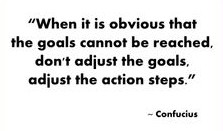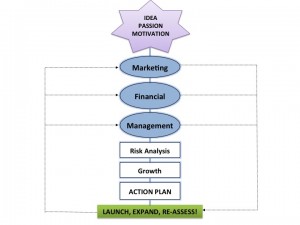There are many factors that must be considered when operating a business with others. We asked some of our clients to share their partnership advice for small business entrepreneurs who are considering business co-ownership. Here’s what they had to say!
 Jane and her business partners provide a full range of urban design services, including strategy, design, conceptual architecture, and urban design education and communications.
Jane and her business partners provide a full range of urban design services, including strategy, design, conceptual architecture, and urban design education and communications.
Why did you decide to go into business with other people?
Two or three is better than one! It is good to share responsibility. You can do more as a team. And, it makes life outside of the business more flexible, since we can cover each other when we go on vacation.
What do you love about owning a business with others?
I really like collaborating with my partners. I learn a lot from them. They are not just business partners but mentors. I feel that I contribute to something bigger than just myself when I work as a team. We all contribute energy, knowledge, encouragement, skill, support, and friendship to each other.
What is most challenging about co-owning a business?
Distributing responsibilities is a challenge that requires daily tending. But, that’s what running a business is all about!
How do you deal with this challenge?
TALK. Say exactly what you feel and state what you want. For tougher moments it’s good to have a third partner who can hear you both out. And, when you don’t get your way, have a good attitude about getting what you desire next time and understanding that it’s for the long haul.
What advice would you give to entrepreneurs considering a business partnership?
Think of your potential business partner like a travel partner. Use a similar filter as the one you apply when you are choosing a travel buddy. This is a long journey. You are going to get lost. Can you handle being stuck somewhere with this person? Will they help you figure out what you’re going to do next? Will you choose the same path forward?
Write a partnership agreement. The biggest deal of all is the partnership agreement. It’s like wedding vows and a pre-nup (but not as romantic). The value of your business is maintaining a strong relationship between you and your partner every day. If that is strong, your relationship with your customers will also be strong.
What do you wish you had done differently?
There is not that much I would do differently, but I do need to remind myself to give props to my partners as much as possible. I want to practice gratefulness in what they do everyday. And, I want to make sure we are connected as much as reasonable.
 Shamita and her business partners co-own a counseling business that provides therapeutic support services to teens and families experiencing emotional, behavioral and substance-related difficulties.
Shamita and her business partners co-own a counseling business that provides therapeutic support services to teens and families experiencing emotional, behavioral and substance-related difficulties.
Why did you decide to go into business with other people?
Being a part of a team is extremely rewarding. We each have important strengths, which compliment one another and support a balanced approach when making important business decisions.
What do you love about owning a business with others?
I like the security of knowing that if one of us is having an off day, there are two others dotting “I”s and crossing “T”s. Building a business is filled with opportunities for both successes and failures. It certainly feels better experiencing either case when one is not alone.
What is most challenging about co-owning a business?
It is inevitable that tension will build when one or more partners fails to pull their weight or during periods when a partner experiences a crisis of confidence or some ambivalence about the work.
How do you deal with these challenges?
With solid agreements, direct communication and healthy boundaries—without these, we can end up feeling misused and mistreated. Fairness is essential for a working partnership.
What advice would you give to entrepreneurs considering a business partnership?
Talk through every possibility and establish a solid partnership agreement, no matter how close you may be. In fact, the closer you are, it is even more imperative to outline clear and specific agreements about how to work within the partnership and exit the partnership.

Deborah co-owns the longest established Feldenkrais Center in the Bay Area offering individual sessions, classes and related wellness services.
Deborah’s partnership advice for other small business owners:
Make a plan. It is important to plan for the changes that the future inevitably brings. Not only to decide what will happen, but design a process for working through change.
Communicate openly. Good communication skills are essential, as well as being able to have difficult conversations and still be friends, and work through different goals and values. There will be times when you want to go in a different direction than your partner. If you want the business to grow and develop, you have to accept the difference and see how you can make it work for everyone. Then you can be happy to be in business.
Trust is essential. You have to trust each other; you must trust that your partner will be honest, and fair. You may not be best friends but you both must consider each other’s needs and want the best outcome for both of you.
Are you thinking about going into business with someone else? Check out these three important steps when considering a business partnership or joint venture. If you currently co-own a business, what partnership advice have you received that has made a difference? What words of wisdom would you want to share with others about business co-ownership?





 Jane and her business partners provide a full range of urban design services, including strategy, design, conceptual architecture, and urban design education and communications.
Jane and her business partners provide a full range of urban design services, including strategy, design, conceptual architecture, and urban design education and communications. Shamita and her business partners co-own a counseling business that provides therapeutic support services to teens and families experiencing emotional, behavioral and substance-related difficulties.
Shamita and her business partners co-own a counseling business that provides therapeutic support services to teens and families experiencing emotional, behavioral and substance-related difficulties.


 JUMPING IN
JUMPING IN